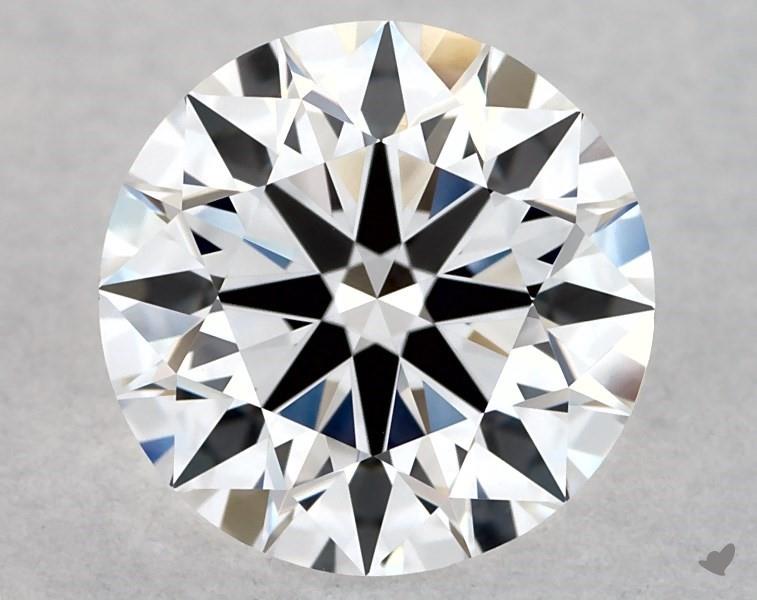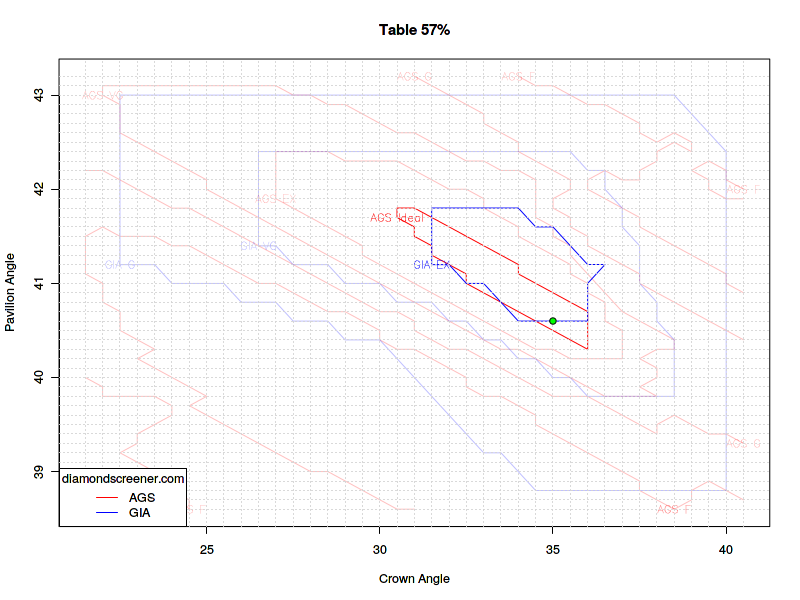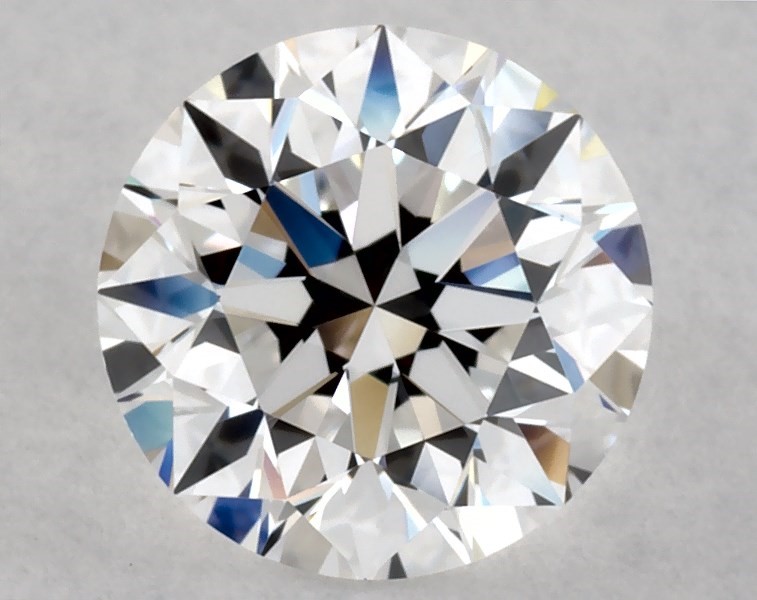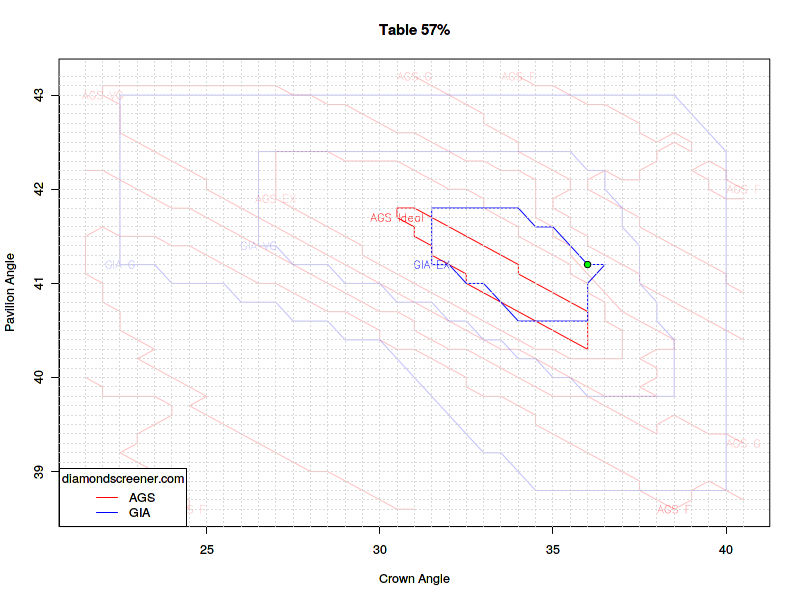Don’t let a jeweler mislead you by overcomplicating the buying process. Keep it simple: there are only a few things you need to keep in mind when buying a round diamond.
- Maximize cut, carat, color, and clarity in that order.
- Cut is most important because it determines how a diamond shines. There’s a lot of variation in cut quality, even within GIA Excellent. Use the cut estimator to find the best cut stones.
- Clarity is least important because it only needs to look clean to the naked eye.
- Use the diamond price curves to find the lowest price diamond that matches your criteria. I’ve highlighted the best cut stones that qualify as GIA Excellent and AGS 0 Ideal to make the search process as smooth as possible.
The round brilliant is the most straightforward diamond shape to buy. It is a standardized 58 facet structure that has been extensively researched.
Cut
Maximizing cut accomplishes two things:
- Cut determines light performance. The sole purpose of a diamond is to be shiny.
- A well-cut stone ensures that the carats are distributed optimally; don’t pay for carats you can’t see. Think of it like an iceberg – if a diamond is too deep, then it will look smaller because its carat weight is hidden beneath the surface.
A round diamond’s geometry is dictated by its table %, crown angle, and pavilion angle. The AGS and GIA proportion-based cut grade criteria use these three values to assign a cut grade.
AGS’ cut grade is an objective measure of light performance based on computer-simulated light ray tracing. GIA’s cut grade is based on based on aggregated consumer preferences for different proportion combinations. If two grading labs (one based on computer simulation, one based on consumer opinion) both agree that a stone is at the top of their scale, then it should be a brilliant stone. The cut estimator shows how the two labs line up for a given combination of proportions.
The importance of proportions is shown below. Both diamonds below are GIA Excellent diamonds, but some GIA Excellents are better than others.
- The first is the archetype of what you should be looking for. It has ideal proportions, with table % crown angle, and pavilion angle that qualify it as AGS 0 Ideal. It has excellent optical symmetry. You can clearly see the 8 arrows radiating from the center in the face-up position.
- The second is an example of what to avoid. Even though it’s GIA Excellent, it has worse proportions that would only qualify it as AGS 3 Good. The arrows have disappeared, which leads to less scintillation.
Buy A Diamond That Looks Like This


Avoid A Diamond That Looks Like This


Carat/Color
Most people choose to prioritize carats over color because size is readily apparent, but color is harder to see.
A secondary consideration for color is fluorescence. Many other sites claim that fluorescence can potentially improve color. This is plausible in theory because light is an additive color system in which blue (fluorescence) + yellow (diamond color) = white. However, in practice most viewing conditions (e.g. indoor lighting) do not have UV light that activates fluorescence. Since fluorescence is not observed most of the time, you shouldn’t rely on it to improve color. Strong fluorescent diamonds can also be overgraded for color, so it’s safer to limit your search to medium and below.
Clarity
The goal should be to find a diamond that’s clean to the naked eye. An eye-clean SI1 or VS2 will provide better value than a higher clarity grade. However, each diamond must be evaluated individually – avoid black crystals in the middle of the table and inclusions that reduce transparency (e.g. “clarity is based on clouds not shown”). Instead, try to find stones with white inclusions near the edges that can be hidden under a prong.
Conclusion
Using these guidelines, you should be able to find a beautiful diamond that provides the most bang for your buck. I’ve tried to make the search process as smooth as possible by highlighting the best cut stones on the diamond price curves. Good luck!